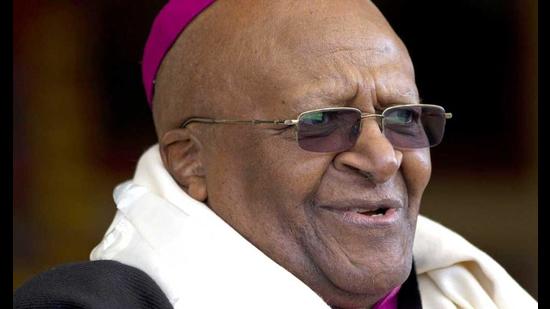Tutu: In the steps of Mahatma Gandhi
The Indian team’s gesture in honouring Tutu symbolised the nation’s recognition of the link between the Archbishop and Mahatma Gandhi. It was a physical link
Christmas is traditionally known as a season of joy and cheer. In spite of the dismal impact of the new Covid-19 variant, Omicron, on celebrations this year, one photograph did gladden me. It was the photograph of the Indian and South African cricket teams standing in line, facing the camera, caps doffed, observing a minute silence in honour of Archbishop Desmond Tutu before the first Test match started. Tutu died on the day after Christmas. There is, of course, always a sadness about a death, but there’s also joy in the memory of a life well-lived, and Desmond Tutu’s life was well-lived.

The Indian team’s gesture in honouring Tutu symbolised the nation’s recognition of the link between the Archbishop and Mahatma Gandhi. It was a physical link. Tutu once said: “You gave us a gift, Mahatma Gandhi, and we gave him back to you,” but it was also a political link. Tutu’s adoption of non-violence to fight apartheid was an offshoot of Gandhi’s non-violent resistance in the Independence movement.
But the link went even deeper than that. Both men were influenced by their religious faith. In the struggle for Independence, Gandhi listened to his inner voice, which he believed was “the voice of God.” He spoke of his “indescribable bond with Hinduism.” In his young days, Tutu was much influenced by a Christian missionary, Father Trevor Huddleston, the author of Naught for your comfort, the book that awoke the world to apartheid. Tutu remained Anglican Emeritus, or honorary, Archbishop of Cape Town, until his death.
Both Tutu and Gandhi were nationalists in that they cared passionately about their nations, but Gandhi warned Indians, “the minorities must be made to realise that they are as much valued citizens of the State they live in as the majority of the State.” Tutu set before South Africans the challenge of making their country what he called “The Rainbow Nation”, a multiracial nation in which people of all colours, creeds, and races lived together peacefully.
Tutu and Nelson Mandela made a start with the Truth and Reconciliation Commission, designed to heal the deep wounds left by apartheid, and prevents the vicious circle of revenge, endless blood for blood, which would almost certainly have followed if it had not been for the commission.
The commission has been generally, but not universally, regarded as a success, but during his last years, Tutu would admit that his dream of a “Rainbow Nation” has not yet been realised. What about Gandhi’s dream for India? In his last year, he was still hoping for “a country which forsook the accustomed method of violence in order to settle human conflicts, whether it is between two states or between two sections of the same people.”
But over the Christmas period, we heard the verbal violence of militant Hindu leaders calling for their followers to arm and fight Muslims. Christmas celebrations were disrupted in different places by groups shouting “Jai Shri Ram”. A statue of Jesus in a church was desecrated. Two men accused of sacrilege by Sikhs were butchered in Amritsar and Kapurthala. The government of Karnataka, a state where 42 attacks on Christians have been recorded this year, passed a draconian anti-conversion bill, which will inevitably encourage Hindu vigilantism. In Haryana, the government surrendered to Hindu demands that Muslims should no longer be allowed to worship outside.
The central government has heightened the impression that it is hostile to Christianity by refusing to renew permission for Mother Teresa’s Sisters of Charity to accept foreign donations. The Bharatiya Janata Party and Opposition leaders have been noticeably silent on the recent religious violence. So where in India today are the leaders like Tutu and Gandhi whose faith inspired them to reconcile their fellow citizens to each other and to counter those who use religion to create discord?
The views expressed are personal
All Access.
One Subscription.
Get 360° coverage—from daily headlines
to 100 year archives.



HT App & Website







